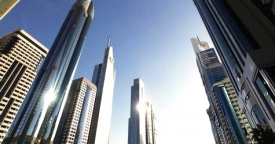
Phidar Advisory presented its own report on the Dubai real estate market for the year’s third quarter.
According to data collected using House Price Indices, overall apartment sale prices in Dubai were down 3.6%, while apartment rentals have remained almost unchanged, declining by only 0.5%, which has pushed the yields up to 7.5%.
Yields have also risen in the villas segment. Sales prices here fell by 3.4% in the last three months, while rentals were down by 1.5%, which increased this assets type yields up to 4.8%.
Phidar Advisory managing director Jesse Downs agreed with other market participants as for the forecast on the volume of supply in Dubai in the coming years. The whole number of residential developments launched in Dubai is large enough, but “some announced and even launched projects are not viable, so handover is not expected in the stated timeframe,” Downs said.
Thus, the compound annual growth rate (CAGR) at the Dubai’s property market in the next five years is unlikely to exceed 2.8%, while population growth during this period, and the related demand for housing is expected to be up to 5.8%. The demand growth will be mostly associated with the creation of many new jobs in the run-up to Expo 2020, while the peak in demand can be achieved starting from 2018, the report said.
Therefore, the assumption of most local Dubai developers and analysts about the new wave of growth in Dubai house prices in the mid-2016, looks quite realistic.







